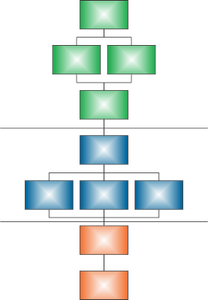ELearning/Course design/Prerequisites and priorities: Difference between revisions
en>Thomas Eyre m Fixed images and links |
Thomas.Eyre (talk | contribs) m 3 revisions imported |
(No difference)
| |
Latest revision as of 20:39, 7 January 2025

Prerequisites
Required or necessary as a prior condition. Presumed learner knowledge, skill, and attitude. Prerequisites are important for establishing basic subject matter, or assumed prior learning that will not be addressed. They also communicate a hierarchy for learning from basic to advanced, from isolated to integrated performance, from deliberate to second-nature.
| Knowledge | Skill | Attitude |
|
|
|
Hierarchies are central to the construction of personalized learning environments, trades training programs, majors and minors in college degrees.
For curriculum courses, it's tempting to list the prerequisite courses and leave it at that. However, it's important to include a brief list of expected characteristics of learners as they enter the course. Doing so increases clarity and motivation, and also promotes a deeper approach to learning (O'Brien, et al., 2008).
Examples
Consider the following two approaches to identifying course prerequisites. Which provides more information? Which give you a better feel for what's required?
Course: CS149 Parallel Computing (Stanford)
| This course is open to students who have completed the introductory CS course sequence through CS110 and have taken CS143. |
Course: Introduction to Parallel Programming (Udacity)
| Knowledge | Skill | Attitude |
| Basic knowledge of data structures and algorithms | Solid experience with C or C++ programming | A willingness to think differently about solving problems. Learn how scientific discovery can be accelerated by combining theory and experimentation with computing to fight cancer, prevent heart attacks, and spur new advances in robotic surgery. |
Priorities
Based on the principle that coverage of all significant topics or details is not possible within the constraints of instructional goals, learner characteristics, and learning context, priorities inform decisions on what to leave in and what to leave out, and what to require and what to make optional.
A few descriptions of priority levels:
| First Priority | Second Priority | Third Priority |
|
|
|
A practical approach for identifying priorities is to begin with a detailed topical outline, compare each to the course objectives, and assign a 1, 2, or 3 to each according to the extent to which they contribute to the objectives. These values will help as you decide what to emphasize, what to include as optional or supplementary, and what to leave out or suggest for further investigation by students.
⇑ ⇑ ⇑ Up to Course development
⇑ ⇑ ⇑ ⇑ Up to Home